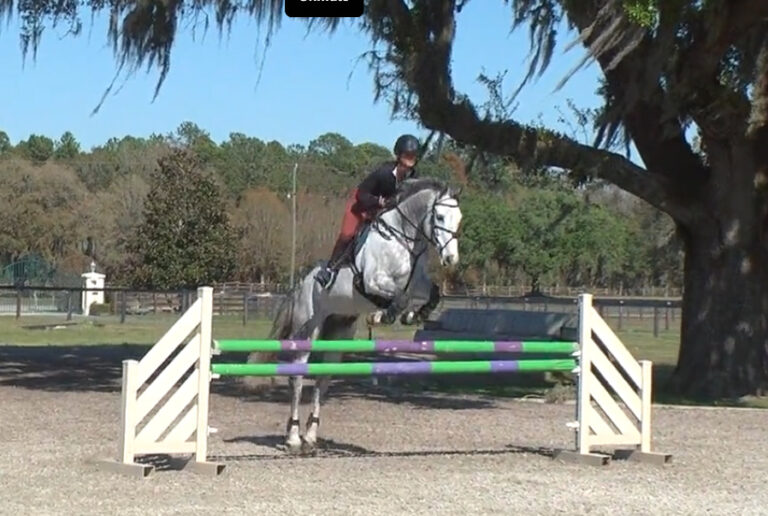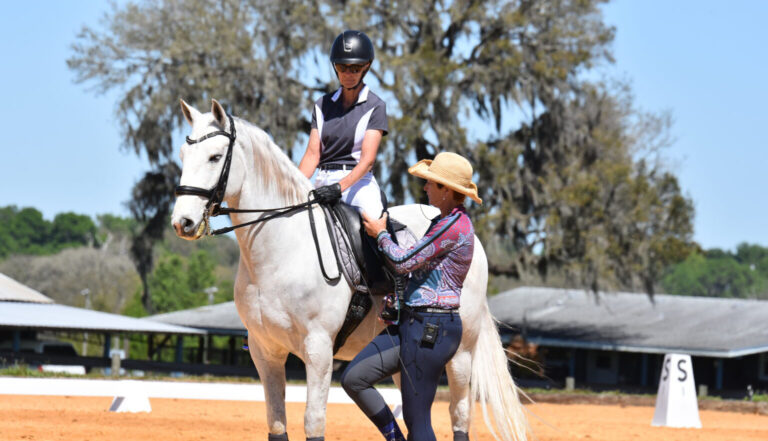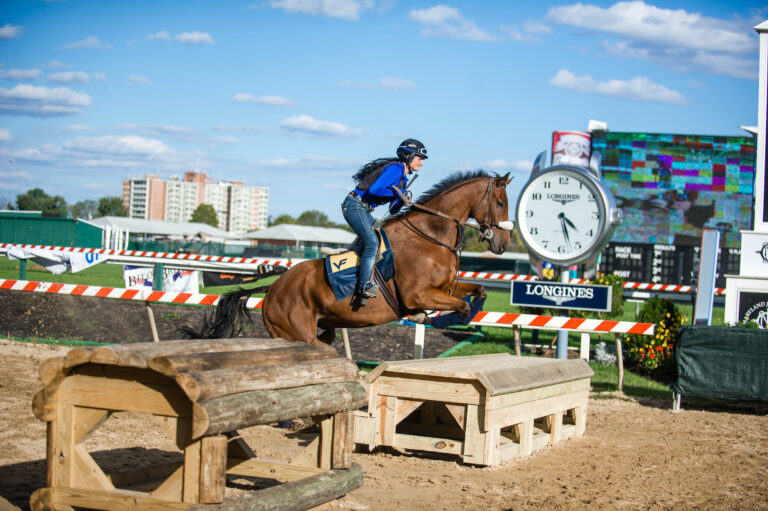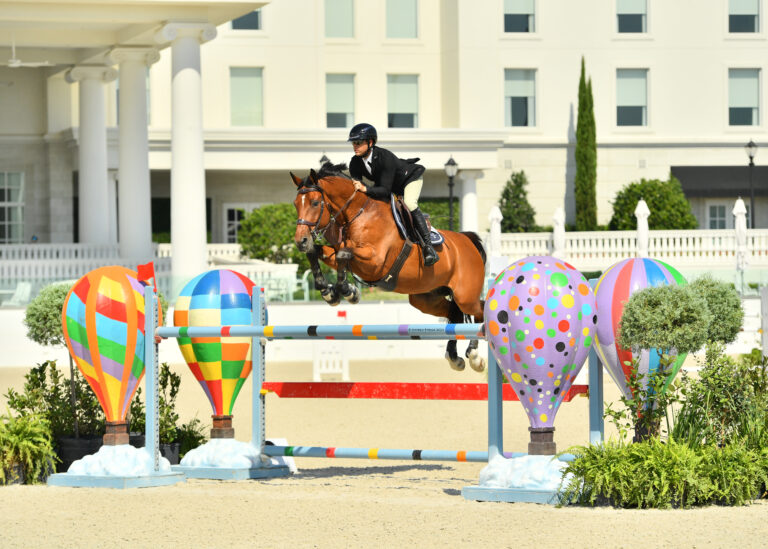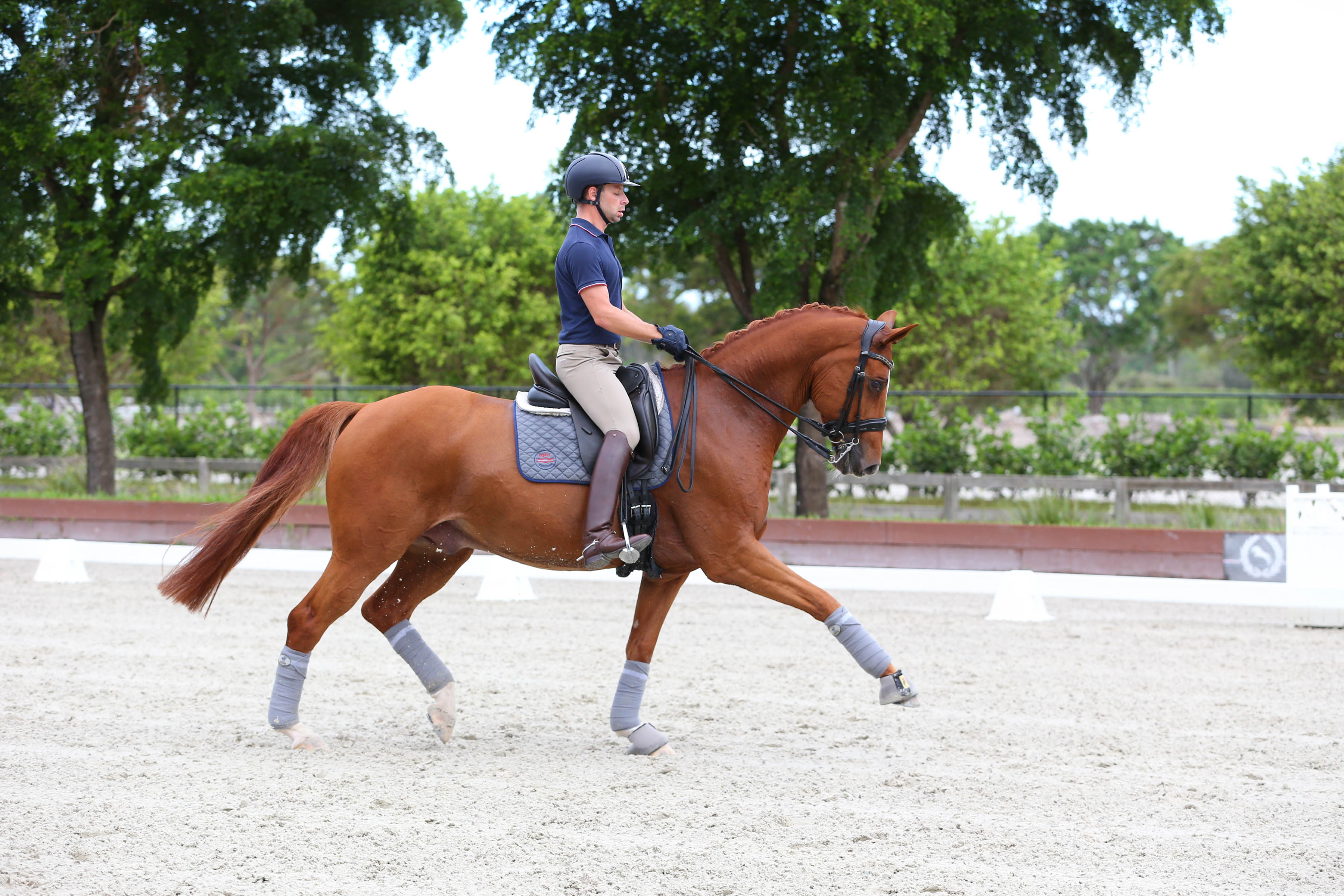
The world’s best riders make dressage into an art form by creating and controlling their horses’ power with opposing aids—producing energy with the legs and seat and using the body and rein contact to channel it. They do this so harmoniously that you rarely see their aids. What you also don’t see is all the homework that went into getting to that point. To achieve such finesse, you must be effective at every level. From the very first time you mount a young horse, he must react to your aids. You can’t expect these reactions to be as immediate as you will later in his education, but it’s so important that you get a reaction. How well you establish this reliability to the aids early on will determine how successful all of your subsequent training is.
To teach responsiveness, you must always know the answer you want to every question you ask. And you must have an expectation that an aid will always work. When it doesn’t work initially, be prepared to exaggerate that aid however necessary to achieve a response. As your horse’s understanding improves throughout his career, you’ll be able to refine your aids more and more. They won’t change fundamentally, but the degree of subtlety will gradually increase.
Dressage instructors focus intensely on certain aids—the reins, legs and individual seat bones—but you don’t often hear them talk about how to teach horses to respond to their riders’ weight distribution. In this article, I’ll explain how key this aid is and how you can apply it at every level of your horse’s training.
How It Works
Horses naturally want to be balanced. That’s why you don’t see them run around the field tipped sideways. When you nudge them to step away from you on the cross-ties, they automatically readjust themselves to a stance they find comfortable—not necessarily square, but with their weight distributed fairly evenly across all four legs. You can use this natural tendency to your advantage when you’re riding. When you shift your weight to one side, forward or backward, your horse will instinctively try to shift his own weight to prevent you from throwing him off balance. So the aid is simply a matter of counteracting his natural desires by shifting your weight in the opposite direction.
You can use this tool to help teach a young horse your leg and rein aids—which won’t make as much intuitive sense to him at first—and to teach him better balance on turns and circles. As his training advances, your weight aids will be helpful for re-inforcing your other aids when teaching him new skills. They’ll also be useful for encouraging more self-carriage and expression.
Before you apply any weight aid, always check first that your “neutral” position is correct: upright and centered in the saddle with your shoulder, hip and heel aligned and your hands maintaining a light following contact with the reins while your body does nothing else that might interfere with your horse. The more secure you are in this position, the more confidence you’ll inspire in him. Establishing this confidence before every new lesson and exercise is essential.
Here are three examples of how the weight aid can enhance your training at different levels.
Young Horse Starting Under Saddle
The first basic under-saddle lessons you need to teach your horse are how to go forward from the leg and slow down in response to the rein aid. Using weight shifts will help to make these intentions clear. Starting from your correct neutral position, lean forward when you want him to increase his pace and backward when you want him to decrease it. He will naturally speed up to stay balanced underneath your forward weight and slow down to accommodate your backward weight shift.
Don’t be afraid to exaggerate your position to get results. Ideally, you want your horse to respond to a very subtle weight shift, but he won’t always notice that. So lean as dramatically forward or backward as necessary. Committing to doing this can be especially difficult for dressage riders, who try so hard to maintain the perfect position in every step. But remember, it’s always more important to get a reaction to your aids.
As soon as your horse offers even the smallest response to your weight aid, return immediately to your neutral position and praise him with a “Good boy!” and perhaps a stroke on the neck with your inside hand. We dressage riders tend to be perfectionists, but you must reward your horse all the way along the road to perfection to achieve it. That means positively reinforcing any response he makes to your aids that was better than the time before.
Be sure that your aids never conflict. Whenever your leg says, “Go forward,” don’t let your upper body get left behind. For example, if you’re making a transition from walk to trot, be ready to go forward with the motion in that very first step of trot.
Another useful application of the weight aid on a young horse is for controlling his tempo. If he’s trotting too fast, stay in the air just a little longer and bring your shoulders back a few inches during the rising phase of your posting. He’ll try to “catch” you by slowing his tempo.
Lateral weight aids are also extremely useful with youngsters. Ideally, we want dressage horses to travel around turns and circles in an upright balance. Imagine your horse’s head, shoulders and hips as three connected train cars. All of the parts have to follow each other along the same track. And the cars need to stay upright. In their early training, however, horses don’t usually have the strength to achieve this while carrying us on their backs. Instead, they tend to lean in on the turns and circles like a motorcycle. Unfortunately, we riders have the same tendency, so it’s twice as important to be conscious of this.
Here’s how to convert your horse from a motorcycle into a train: Approach the corner of the ring in a posting trot and initiate a very shallow turn, as if you were riding half of a 20-meter circle. (Young horses don’t have enough strength to maintain their balance around corners any deeper than that.) As he enters the turn, stand more on your outside stirrup while simultaneously leaning your shoulders to the outside. Be very careful not to let your weight shift affect your contact in the reins.
If your horse still falls in on the turn, exaggerate the weight shift a little more the next time, leaning your shoulders a bit further to the outside and putting more weight down into that outside stirrup. Experiment with these aids until you find what’s most effective with him. Each time you go around a turn or circle, close your inside leg at the girth as well. Over time, by associating that aid with your weight shift, you’ll be able to use it alone to support his balance on turns.
First Level Horse
This same sideways weight shift will help you when it comes time to introduce your horse to the leg-yield, where you ask him to move sideways off a single leg aid and flex slightly away from the direction he’s going. By now he will fully understand that your two legs used together mean go forward. Learning to go sideways in response to a single leg aid is a new concept, which might confuse him at first. Instead of resorting to lots of kicking and use of the whip—which is never constructive—reinforce the leg aid with your weight aid.
For example, start at the walk tracking to the left. When your horse feels confident and happily walking forward, check that your position is correctly neutral and then turn down the centerline. After walking straight for several strides, squeeze your left leg. At the same time, drop the weight down in your right heel with your right leg against his side while keeping your upper body tall and centered over his spine. This will prevent you from tipping your body to the left—a common mistake that riders make in the leg-yield and another example of unintentionally conflicting aids.
If your horse doesn’t move at all to the right, step more weight down into your right stirrup, just as you did to balance his “train cars” on turns. He should recognize this aid from his earlier training and move a little to the right. Again, experiment with how much of a shift works best to produce the response you want.
The moment he takes a step or two sideways, release the leg aid, praise him immediately, return to your neutral position and ask him to walk straight again. When he feels forward and square in his body, ask for another step or two sideways. If you ever lose the forward momentum, immediately close both legs and lean a little forward.
In the beginning, it’s OK to allow him to run through his shoulder a little as he steps sideways. We’re only asking for a reaction to the aids right now, not perfection. And don’t get too greedy: Asking for too many lateral steps at first can be overwhelming.
Eventually, your horse will learn to correlate the weight shift with the leg aid and you’ll be able to use a less and less dramatic weight shift. As his understanding and strength improve, you can refine your aids and progress to a more ideal leg-yield—with his neck, shoulders and hips aligned and parallel to the long side, a slight flexion around your inside leg (the leg he’s stepping away from) and nice regular steps crossing over, following a diagonal track from the centerline to the long side. Once you’ve achieved that at the walk, you can follow the same procedure at the trot.
Meanwhile, continue to use your forward and backward weight shifts to control his tempo. Sit a little behind the motion when he rushes and a little ahead if he falls behind your leg. As you begin to ask him to develop more pushing power from behind, be aware of your weight’s influence on his balance. Although your lower leg is responsible for creating the energy, the best forward driving aid is a seat that follows the movement. Imagine your horse is a powerboat. As you increase the power from the back, the front end rises. Tipping your upper body slightly forward will prevent this positive energy from toppling you backward.
Third Level Horse
By the time your horse reaches Third Level, he should fully understand your lateral aids. However, you will still often find it helpful to reinforce them with your weight aids. Usually you’ll be able to apply these weight aids much more subtly than you did in his earlier training—but be prepared, as always, to give as much aid as necessary to obtain the response you want.
A good example is the introduction of the half-pass. The concept is similar to that of the leg-yield—asking your horse to move sideways away from a single leg aid—but your bending aids are different. Whereas in leg-yield your horse is flexed slightly away from the direction he’s going, in half-pass he’s bent toward the direction he’s going. So your bending aids are opposite. Whenever you make a change like this, expect that your horse might not understand what you want initially—and be prepared to use more of a weight shift to make it clear.
Say you’re trotting on the left rein and turn down the centerline. To initiate a half-pass to the left, ask your horse to stay bent around your left leg while moving away from your right leg. If he doesn’t respond promptly, step more of your weight into your left stirrup. Increase this aid and reduce the degree of bend until he responds by moving sideways. Remember, when you teach a new skill like this, your immediate goals are not about how many steps your horse produces or how perfectly he does them. What matters most at this point is getting a reliable reaction to your aids. As soon as he reacts correctly, praise him, return to your neutral position and allow him to travel straight forward again. Once he’s taken a breath and relaxed, ask for another few sideways steps.
As with the leg-yield, if you’re consistent and clear with your aids from the beginning, you’ll gradually be able to use them more subtly over time. But your weight aid will continue to come in handy. For example, if his front legs lack expression in the half-pass (or any other movement), you can sit back slightly to weight his hind legs more, which will lighten his front end. At the other extreme, if he feels a little stuck and behind your leg, accompany your driving aid (your lower leg) with a slightly more forward upper-body position to encourage more activity.
These strategies will continue to pay off all the way through to the Grand Prix level. The world’s top riders have the same basic expectation that their horses will respond to every aid they give and are always willing to follow through to make that happen. Only with this reliable foundation can they create, control and direct energy in the manner that makes dressage such a beautiful art form.
About David Marcus
Born in Omaha, Nebraska, David Marcus moved to Canada in 1996 and became a Canadian citizen in 2011. He and the Danish Warmblood gelding Chrevi’s Capital represented his new country in both the 2012 London Olympics and the 2014 FEI World Equestrian Games in Normandy, France. The pair also competed on multiple Nations Cup teams and topped the North American League to qualify for the 2013 FEI World Cup™ Dressage Final in Göthenburg, Sweden. Throughout his career, David has won many Grands Prix, including CDIs at Dressage at Devon and the Adequan Global Dressage Festival. He won the 2016 Adequan/USDF Intermediate II Dressage Horse of the Year award aboard Binjora. Recently, he was selected as the guest rider and judge for the KWPN Championships’ Pavo Cup in Ermelo, the Netherlands.
David has coached multiple students to podium finishes at the North American Junior & Young Rider Championships as well as to many national show and CDI wins. He is now based year-round in Wellington, Florida, where he and his husband, Nicholas Fyffe, run the training and sales operation Marcus Fyffe Dressage.
This article was originally printed in the February 2018 issue of Practical Horseman.





